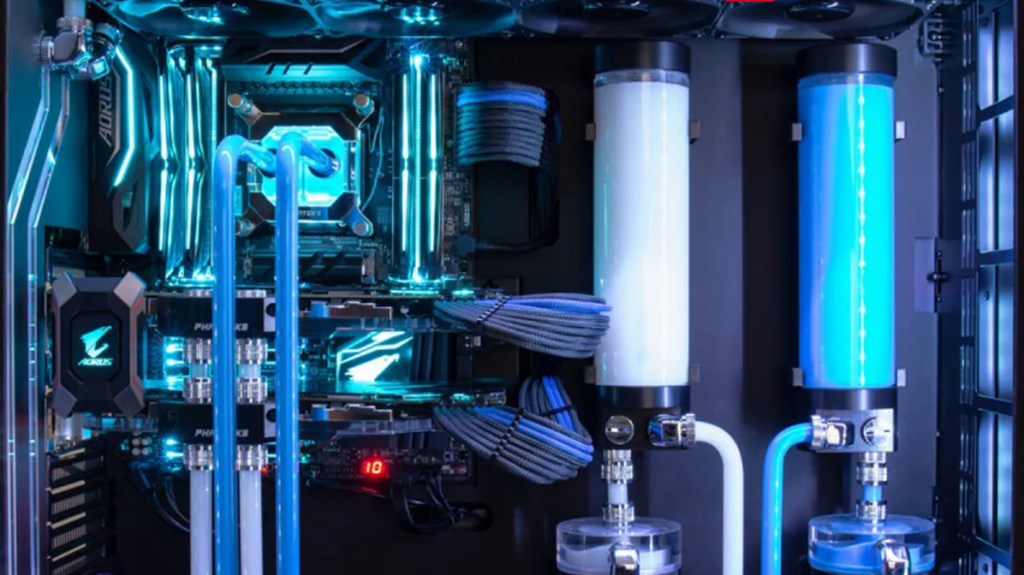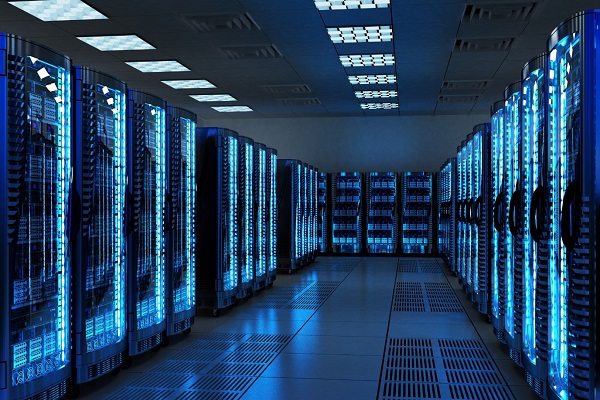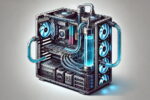In the fast-paced world of technology, where the demand for performance and efficiency in servers is a constant, liquid cooling emerges as an innovative and essential solution. In this blog, we will explore the key concepts of server liquid cooling, highlighting its importance in the context of modern data center infrastructure.
Understanding Liquid Cooling How does it work?

Liquid cooling is based on the principle that water has a greater thermal capacity than air, that is, it can absorb and transport more heat per unit of mass and volume.
This type of cooling is an increasingly popular method, as it is very very effective in cooling electronic devices such as CPUs and GPUs. By dissipating heat from these components using water the performance of the CPU/GPU increases and generally increases the lifespan of the devices. In addition, liquid cooling is more energy efficient than traditional cooling methods by air, thus reducing energy consumption and operating costs.
Liquid cooling can also significantly reduce the noise level of your system, making it an ideal choice for quiet environments. Lastly, liquid cooling components can often be reused, reducing waste and providing a more sustainable solution.
What benefits does liquid cooling have in servers?

Liquid cooling is especially suitable for computer servers, as they generate a large amount of heat due to their high power consumption and intensive use. This is why this type of refrigeration offers the following benefits:
-
Energy efficiency
Water has superior physical properties compared to air, specifically its heat capacity, which is better than any other fluid or gas on earth. This means that water is much more efficient at transferring heat. In fact, one liter of water can remove 3,000 times more energy from a system compared to one liter of air. This is because air has poor thermal conductivity.
-
Ahorro de energía
Air cooling systems rely on fans to move a large volume of air to cool the system. These fans require a significant amount of electrical energy to operate. On the other hand, liquid cooling systems use pumps to circulate a smaller volume of coolant liquid to cool the system. The pumps in a liquid cooling system require less electrical energy than the fans to perform the cooling function. Liquid cooling systems require less than 10% of the energy required by comparable air cooling systems.
-
It’s silent
Another benefit of liquid cooling systems is that they can provide a quieter work environment compared to air-cooled systems. Water-cooled systems use liquid refrigerant to transfer heat from components, resulting in quieter operation.
-
It is extremely robust
Liquid cooling systems have been increasingly adopted by various industries for their superior cooling performance and efficiency. One of the main advantages of a liquid cooling system is that it is a closed system, which means that it is not affected by external factors such as dirt or dust. This ensures that the cooling capacity and the availability of the system to remain constant over time, without any degradation.
-
Liquid cooling is number 1
Using liquid cooling instead of air systems can be very beneficial as it eliminates the need for additional equipment and reduces installation and operating costs. This is because air systems typically require air conditioning devices and ducts, which can make the installation process more complicated and expensive. The larger the installation of servers that do not have liquid cooling installed, the greater the need to install a more powerful and suitable air conditioning system for said servers.
Get a complete solution for your server

At Ibertrónica.es we offer you the complete solution for your server!
Our liquid cooling systems for servers are designed to be efficient, reliable and we give it to you installed. In addition, we will mount it in the specific rack box for your server, arranged and optimized specifically to fit liquid cooling and hardware components together.
You will get a complete, economical and environmentally friendly solution!
And how can I have my server with this liquid cooling solution?
The first thing you will need to know is what format your server will be mounted in, 1U, 2U or 4U. Once you have chosen the format (And that will depend on what cards the server will have and the storage system you are going to use) you will only have to select the format on our website and we will give you the complete solution through our configurator.







